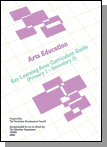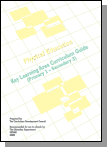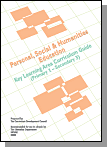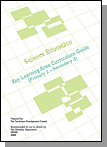 |
| Contents |
| |
| 2 Whole-school Curriculum Planning – Curriculum Planning and Effective Use of Resources |
| |
| This is one of the chapters of the Basic Education Curriculum Guide: To Sustain, Deepen and Focus on Learning to Learn (Primary 1 - 6). Its contents are as follows: |
| 2.1 Background |
| 2.2 Purposes of the Chapter |
| 2.3 The Importance of Whole-school Curriculum Planning |
| 2.4 Five Stages of Whole-school Curriculum Planning |
| |
2.4.1 Stage 1: Context Analysis |
| |
2.4.2 Stage 2: Curriculum Planning and Effective Use of Resources |
| |
|
2.4.2.1 Curriculum Planning |
| |
|
2.4.2.2 Resources for Curriculum Planning |
| |
2.4.3 Stage 3: Curriculum Implementation |
| |
2.4.4 Stage 4: Continuous Monitoring |
| |
2.4.5 Stage 5: Review and Evaluation |
| Curriculum Planning and Effective Use of Resources - Exemplars for Primary Schools |
| Remarks |
| Reference Notes |
| References |
|
| |
| |
| 2.1 Background |
| |
| Looking back on the history of curriculum development in Hong Kong, schools have responded positively to the curriculum reform in the past ten years. By making reference to the central curriculum and school mission, schools have generally developed the school-based curriculum taking into consideration students’ characteristics, teachers’ expertise and strengths of the schools. The establishment of the post of Primary School Curriculum Leaders in the school year of 2002/03 has played an important role in whole-school curriculum planning and development. |
| |
| |
| 2.2 Purposes of the Chapter |
| |
 |
Explain the importance of whole-school curriculum planning |
 |
Help schools reflect upon their strengths and areas for further improvement or with reference to school mission and direction of curriculum development in order to enhance the whole-school curriculum |
 |
Introduce the five stages of whole-school curriculum planning to explain the curriculum planning cycle with special focus on curriculum planning and use of resources |
 |
Emphasise that schools should conduct whole-school curriculum planning by following the suggestions in this chapter to ensure that students acquire appropriate learning experiences during the six-year primary school education |
| |
| |
| 2.3 The Importance of Whole-school Curriculum Planning |
| |
| The importance of whole-school curriculum planning and relevant references are listed below: |
| The Importance of
Whole-school Curriculum Planning |
Relevant References |
| Through planning the curriculum of each KLA, develop students’ knowledge and skills as well as cultivate their values and attitudes to enable them to acquire broad and balanced learning experiences, and to develop multiple potential. |
Curriculum Guide of each KLA |
| Add appropriate learning elements in response to social changes to ensure that student learning is keeping up with the times. |
Chapter 1 “Direction of Schools’ Curriculum Development – Balanced Development, Continuous Enhancement” of this Guide |
| Enable learning, teaching and assessment to be better connected and coordinated. |
Chapter 3 “Four Key Tasks”, Chapter 4 “Effective Learning and Teaching”, Chapter 5 “Assessment”, Chapter 6 “Life-wide Learning” and Chapter 8 “Meaningful Homework” of this Guide |
| Plan, deploy and utilise existing learning and teaching resources more effectively while exploiting other beneficial resources including community resources and partnership with parents to meet new learning and teaching needs. |
Chapter 7 “Quality Learning and Teaching Resources and School Library Development”, Chapter 11 “The School-Family-Community Web” of this Guide |
| Enable student learning to be connected smoothly across different key stages. |
Chapter 9 “Interface at Various Levels of Schooling” of this Guide |
| Provide opportunities for professional dialogue and exchange between School Heads and teachers. Such process helps to identify teachers’ professional development needs in curriculum implementation. |
Chapter 10 “Continuing Professional Development of Teachers” of this Guide |
|
| |
 For Reflection and Action For Reflection and Action |
 |
Who should participate in whole-school curriculum planning? Why? |
 |
When should whole-school curriculum planning start? |
 |
What is the relationship between whole-school curriculum planning, curriculum implementation and curriculum evaluation? |
|
|
| |
| |
| 2.4 Five Stages of Whole-school Curriculum Planning |
| |
Whole-school curriculum planning is very important to curriculum implementation and the continuous development of curriculum. It includes the five stages below1:
Stage 1: Context Analysis
Stage 2: Curriculum Planning and Effective Use of Resources
Stage 3: Curriculum Implementation
Stage 4: Continuous Monitoring
Stage 5: Review and Evaluation |
| |
| The planning process is not necessarily conducted in a linear direction. Depending on the circumstances and needs of each stage of the planning process, schools may sometimes revert to different stages to make adjustment to planning and resources deployment, which may include conducting the context analysis again. This part mainly provides explanation for “Stage 2: Curriculum Planning and Effective Use of Resources”. For the other four stages, only brief explanation will be provided. |
| |
| Diagram 2.1 Five Stages of Whole-school Curriculum Planning |
 |
| |
| 2.4.1 Stage 1- Contextual Analysis |
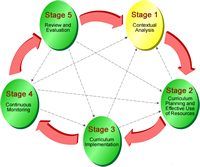 |
|
| |
| 1. The strengths acquired from curriculum planning by primary schools and the areas for further enhancement or improvement |
 |
Strengths acquired |
| |
 |
Curriculum leaders at various levels including the School Heads/Deputy Heads, Primary School Curriculum Leaders and KLA/Subject Leaders, and teacher teams bring enormous benefits to whole-school curriculum planning. |
| |
 |
Starting from the 2002/03 school year, all schools have been given the post of Primary School Curriculum Leader, previously known as Primary School Master/Mistress (Curriculum Development) or PSM(CD). With effect from the school year 2007/08, the PSM(CD) post has been turned into a permanent post and included in the approved teaching staff establishment. The Primary School Curriculum Leader assists the School Heads/Deputy Heads to effectively guide the whole-school curriculum planning and implementation. They lead the teachers in the school to develop a flexible whole-school curriculum plan based on the school context and students’ needs. |
| |
 |
Schools regularly review important issues and make use of curriculum planning, development, organisation and implementation to provide opportunities for students to learn and follow up in the classroom. |
 |
Areas for further enhancement and improvement |
| |
 |
In the allocation of lesson time, particular subjects may be over-emphasised affecting the implementation of a balanced curriculum. |
| |
 |
In planning for the seven learning goals, there is room for enhancement in the learning of the two goals of “Understand their national identity and be concerned about society, the nation as well as the world, and fulfil their role as a responsible citizen” and “Know how to distinguish right from wrong, fulfil their duties as members in the family, society and the nation, and show acceptance and tolerance of the pluralistic values”. |
| |
 |
In planning and organising cross-curricular learning involving different KLAs or subjects, teachers face problems such as the extra time needed for planning, discussion and coordination. |
| |
 |
The diversity of students presents teachers with more challenges and demands more time in curriculum planning. |
|
| |
 For Reflection and Action For Reflection and Action |
| How do the existing strengths and the areas identified for further enhancement and improvement of your school affect your approach to whole-school curriculum planning? |
|
|
| |
| 2. School Context Analysis |
| The aim of school context analysis is to help schools set the direction, priorities and major concerns for curriculum planning through analysing the current situations, the experience, and the emergent needs of schools as well as the implications of the changing society for the development of school-based curriculum. |
| |
 For Reflection and Action For Reflection and Action |
| What are the strengths of your school? What are the areas for further enhancement and improvement? |
| Items |
Strengths Acquired |
Areas for Further Enhancement and Improvement |
| Curriculum |
|
|
| Learning |
|
|
| Teaching |
|
|
| Assessment |
|
|
| Learning and teaching resources |
|
|
| Teacher collaboration |
|
|
| Teacher professional development |
|
|
| Professional development of school curriculum leaders at various levels |
|
|
| School as a learning community |
|
|
| School ethos |
|
|
| Communication, association and collaboration with parents |
|
|
| Communication, association and collaboration with different organisations in society |
|
|
| Others |
|
|
|
|
|
|
| 2.4.2 Stage 2: Curriculum Planning and Effective Use of Resources |
 |
|
| |
| 2.4.2.1 Curriculum Planning |
 |
Whole-school curriculum planning and the learning goals, direction for future development and existing strengths all complementing each other - Each school is unique in its history, experience in curriculum development, learning and teaching, students’ characteristics, teachers’ expertise, leadership style, school culture and community context. A school makes changes according to its own pace for development and reflects in its curriculum the unique school-based features. In conducting curriculum planning, a school should flexibly utilise resources, which include human resources, time resources and curriculum resources, with reference to their learning goals, strengths and school conditions as well as their major concerns. Through planning the short-term goals and the strategic steps for school-based curriculum development, every member implements the priority leaning goals set for the school together. |
 |
Whole-school curriculum planning and school culture - Strategically create a school culture that centres on care, helpfulness and good interpersonal relationship. It contributes to a cheerful and safe learning environment while raising learning motivation and nurturing positive values and attitudes, which is an indispensable part of whole-school curriculum planning. |
 |
Guiding principles of whole-school curriculum planning - Schools should: |
| |
 |
review the changes of the social context, its own strengths as well as areas for enhancement or improvement before setting priority for learning goals and targets for curriculum development (as mentioned in Chapter 1); |
| |
 |
provide a broader, more balanced and more appropriate curriculum for students; |
| |
 |
provide the five essential learning experiences during primary education; |
| |
 |
adopt the suggestions on time allocation in this chapter (refer to section 2.4.2.2); |
| |
 |
make adjustments to school-based curriculum on the basis of needs and with reference to the central curriculum to ensure that in both Key Stages 1 and 2, schools can: |
| |
|
 |
provide an appropriate curriculum based on students’ developmental and learning needs to ensure a smooth interface and progression in curriculum, learning and teaching across key stages; |
| |
|
 |
help students learn from different perspectives, integrate knowledge of different KLAs/subjects through cross-curricular learning and apply them in daily lives; strengthen collaboration between KLAs to avoid unnecessary repetitions of learning arrangements; |
| |
|
 |
emphasise the importance of leisure, rest, recreation and sports for student development; |
| |
|
 |
use appropriate learning, teaching and assessment strategies to achieve the learning goals; and |
| |
|
 |
broaden the learning experiences and capacity of students. |
| |
 |
deploy resources flexibly to achieve the curriculum development and goals set by schools; |
|
 |
build on strengths to strive for excellence; and |
| |
 |
adjust the goals and strategies according to strengths accumulated in different areas, for example, curriculum development, learning and teaching, assessment, teacher professional development. |
|
| |
| 2.4.2.2 Resources for Curriculum Planning |
| The resources which can be used for whole-school curriculum planning include human resources, time resources and curriculum resources. |
| 1. Human Resources |
 |
Co-constructing knowledge and building consensus – The human resources in support of curriculum implementation include the School Heads/Deputy Heads, Primary School Curriculum Leaders, KLA/Subject Leaders, teachers, teacher-librarians etc. Their participation can help to pull wisdom and establish consensus, improve transparency in school’s decision-making, strengthen sense of belonging to the school, enhance collaboration across management levels and facilitate implementation of strategic arrangements. |
 |
Fulfilling potential through matching the right people to the right jobs – When planning the curriculum, schools should make appropriate arrangement according to the strengths and weaknesses of teachers. This allows teachers to stretch their potential and enhance their professional capacity by providing opportunities for teacher professional development. Moreover, through encouraging collaboration, exchange of views and co-construction of knowledge among teachers, the school-based learning community can be developed and school-based curriculum development can be promoted. |
| |
 For Reflection and Action For Reflection and Action |
| What are the roles of the different members in planning the whole-school curriculum? |
| Members |
Contributions |
| School Head/Deputy Head |
|
| Primary School Curriculum Leader |
|
| KLA/Subject Leader |
|
| Teachers |
| For example: Teachers have good frontline experience in curriculum implementation. Their knowledge, belief and experience can inform better curriculum planning. |
|
| Teacher-librarian |
|
| Others |
|
|
|
|
| |
| 2. Time Resources |
 |
Suggested Time Allocation, Calendar Planning and Timetabling |
| |
 |
Appropriate allocation of school time - School-based curriculum is defined as the learning experiences students engage in at school. These experiences can take place during or outside lesson time including regular lesson, lunch, recess or even after school time. Schools should devise a comprehensive plan for the allocation of school time to enrich students’ learning experiences. For example, formal lesson time provides students with comprehensive learning experiences in different KLAs; lunch and after-school hours provide opportunities for students to develop their interpersonal skills through interacting with peers and teachers as well as to develop their cultural interests and leadership qualities through activities. |
| |
|
Diagram 2.2 Components of Learning Time |
| |
|
 |
| |
|
The learning time of students includes: |
| |
|
 |
Lesson time (time when there is close contact with teachers, normally in the classroom, but not necessarily so); |
| |
|
 |
School time other than lesson time (such as recess, lunch, after-school time, open days, examination days); and |
| |
|
 |
Holidays. |
| |
 |
Primary schools should ensure that all students have the following number of school days (excluding school holidays and teacher development days) or the amount of lesson time (in terms of days and hours) per year as shown in Table 1.1. |
| |
|
Table 1.1 School days and lesson time for primary schools in Hong Kong |
| |
|
| |
P1-P3
(KS1) |
P4-P6
(KS2) |
| Length of a school year for primary schools |
190 days or
887* hours (whole-day)
776* hours (bi-sessional) |
Lesson time per school year for primary schools@
(school days or lesson hours per year) |
172 days or
792 hours |
|
* Based on averages over years
@ Examination time not included
|
|
| |
 |
Suggested Time Allocation |
| |
|
 |
Schools should allocate the lesson time as shown in Table 1.2 (% of total lesson time/number of hours of lesson time over 3 years) for each KLA/subject, and make use of flexible time according to the needs of their students and the school context. |
| |
|
|
Table 1.2 Time Allocation for Each KLA/Subject in Primary Schools |
| |
|
|
| KLA/Subject |
Lesson Time (over 3 years) |
P1-P3
(KS1) |
P4-P6
(KS2) |
| Chinese Language Education |
594-713 hours (25-30%) |
| English Language Education |
404-499 hours (17-21%) |
| Mathematics Education |
285-356 hours (12-15%) |
| Science Education |
General Studies
for
Primary Schools
|
285-356 hours (12-15%) |
| Personal, Social and Humanities Education |
| Technology Education |
| Arts Education |
238-356 hours (10-15%) |
| Physical Education |
119-190 hours (5-8%) |
| Sub-total for the lower range of lesson hours over 3 years |
1925 hours (81%) |
| Flexibility |
A flexibility of 19% (about 451 hours over 3 years) |
| |
Provided for:
- Moral and Civic Education/ Guidance to complement values education across KLAs
- Additional common reading time
- School Assembly/Class teacher period to complement values education across KLAs
- Remedial or enhancement studies in KLAs or across KLAs
- Broadening other learning experiences such as community service, co-curricular activities and aesthetic and physical activities to complement life-wide learning
The deployment of flexible time may vary from term to term (e.g. life skills education in the 1st term of the school year, remedial programme of Chinese Language in the 2nd term of the school year, enhancement programme of English Language throughout the school year) |
| Total lesson time over 3 years |
2376 hours
(792 hours x 3) (100%) |
|
| |
|
 |
With reference to the recommended time allocation for each KLA, schools could consider counting the lesson time over the three years of a Key Stage (KS) [KS1 (P1-3) and KS2 (P4-6)]. In other words, there is flexibility for schools to vary the percentage of time allocated to individual KLAs in different years, especially for Chinese and English languages in early primary school years, as long as students are provided with the total lesson time recommended. Examination days, however, should not be counted as lesson time. |
| |
|
 |
Moral and Civic Education is one of the Four Key Tasks. In order to provide students with comprehensive learning experiences through which they develop positive values and attitudes, schools should adopt life events of different aspects as learning scenarios. Examples include events related to the individual, family, community, the nation and the world. Discussions and sharing with students can be held. Diversified learning modes such as classroom learning (e.g. General Studies) and real-life experiences (e.g. visits, community services) can be employed to create a favourable school climate. |
| |
|
 |
Schools should allocate reading time to promote the “Reading to Learn” culture through adopting some of the following practices: |
| |
|
|
• |
Incorporating reading into language lessons; |
| |
|
|
 |
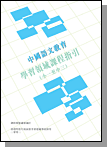 |
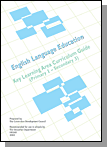 |
| |
Chapter 3,
Section 3.4 and
Chapter 4,
Section 4.4
|
Chapter 3,
Section 3.4 and
Chapter 4,
Section 4.2.1 |
|
| |
|
|
• |
Providing Library lessons; |
| |
|
|
• |
Implementing reading as a regular whole-school activity during school days, e.g. morning reading, lunch-time reading. |
| |
|
 |
Lesson time should be allocated for the study of Chinese history and culture, which contributes positively to the development of national identity among students. This may be reflected in: |
| |
|
|
• |
KLA lesson time, specifically through General Studies for Primary Schools and Chinese Language Education; |
| |
|
|
• |
Special lesson time arranged for cross-KLA projects, e.g. studying the development of Chinese architecture through collaboration between the General Studies and Chinese Language Panels; |
| |
|
|
• |
School assembly time or class teacher periods for Moral and Civic Education learning activities, e.g. organising talks or presentations on important events in Chinese history and/or on national heroes/heroines. |
| |
|
 |
With the introduction of the “Chinese Language Curriculum Second Language Learning Framework” in June 2014, schools can refer to the respective website (http://www.edb.gov.hk/tc/curriculum-development/kla/chi-edu/second-lang.html) (Chinese version only) for the related guidelines and suggestions to make appropriate arrangements such as flexible grouping and time allocation for the teaching of Chinese Language to non-Chinese speaking students. |
| |
|
|
|
|
| |
|
 For Reflection and Action For Reflection and Action |
 |
How can schools ensure that students have sufficient learning time during the school days? How can you make the best use of school days so that students can get the learning opportunities they deserve? |
 |
What do you think about “filling up all students’ time with learning”? How can we ensure that students have sufficient rest and leisure time? |
 |
Some School Heads suggest that stakeholders should work together and create room for students to develop independent learning skills. What can schools do to address this issue? |
|
|
| |
|
|
|
| |
 |
School Calendar Planning and Timetabling - The educational aims should be followed when planning the school calendar and timetable and students' developmental needs in personal growth and learning should always be given the top priority. Schools have to make arrangement for the learning, teaching and assessment of the curriculum of each KLA, project learning, co-curricular activities, life-wide learning opportunities, interface programmes at the beginning or end of term (e.g. induction programmes for teachers and students) and staff development days. For details, please refer to the Education Bureau Circular No. 7/2005, the “School Holiday List and Student Learning Time” and the “Guidelines on Drawing up the School Calendar”. |
| |
|
|
| |
|
|
|
| |
 For Reflection and Action For Reflection and Action |
| In relation to the school mission: |
 |
How can the school mission, learning goals, future direction and targets in curriculum development be reflected in the planning of school calendar and timetabling? |
| |
|
| In relation to students and teachers: |
 |
How can we cater for students’ diversified needs, e.g. development of social skills, leisure and rest, development of learning abilities, and make arrangements for the transition across Key Stages? |
 |
Under what circumstances can the lesson or learning time be extended? |
 |
How can we create room for teachers’ professional development? |
| |
|
| In relation to resources: |
 |
How can the school environment and facilities be fully utilised to make better timetabling arrangements? |
 |
How can the teaching staff be better deployed in devising an effective timetable? |
 |
What contributions can teacher-librarians make? |
 |
How can we make good use of parent support in conducting school activities? |
 |
How can we explore opportunities for cooperation with different organisations? |
 |
How can the community resources be utilised to facilitate student learning? |
| |
|
| In relation to curriculum planning: |
 |
How can we develop a broad and balanced curriculum to cater for the diverse needs of students? |
 |
How many periods should be allocated per day/week/cycle? |
 |
How can the lesson time allocated meet the needs of different KLAs? |
 |
How can cross-KLA collaboration be promoted? |
 |
How can the school-based curriculum, school calendar and timetable be arranged to support the organisation of co-curricular activities or life-wide learning activities? |
 |
Is the number of Physical Education lessons and time for exercise sufficient? |
|
|
| |
|
|
|
 |
More Effective Use of Learning Time |
| |
 |
Creating space for students – Schools should consider the following factors to facilitate more effective use of learning time: |
| |
|
 |
Adapting the curriculum by making reference to the KLA/Subject Curriculum Guides, Supplementary Guide to the Chinese Language Curriculum for NCS Students, Chinese Language Curriculum Second Language Learning Framework, assessment tools and related materials. |
| |
|
 |
Adopting the recommendations in the KLA Curriculum Guides to reduce overlapping content to create space for life-wide learning, project learning, library lessons, morning reading, etc. |
| |
|
|
|
| |
|
 |
Connecting knowledge, skills, values and attitudes through the KLA curriculum frameworks |
| |
|
 |
Adopting different modes of curriculum planning |
| |
|
 |
Taking Four Key Tasks as entry points for cross-curricular learning activities |
| |
|
 |
Reducing the time spent by students on pre-test and pre-examination assessments and post-test and post-examination correction of answer scripts |
| |
|
 |
Encouraging active learning by students, reducing direct instruction and increasing classroom interactions |
| |
|
 |
Organising cultural and aesthetic activities in lunch time and before or after school for whole-person development |
| |
 |
Exercising flexibility in timetabling arrangements to extend and enrich students' learning experiences - Priorities need to be set based on the benefits to students and in consideration of the following methods: |
| |
|
 |
Arranging more double periods, longer periods of 45-55 minutes or a combination of long and short periods throughout the year or in different terms to enable teachers to provide a wide range of learning experiences to meet different learning needs and objectives |
| |
|
 |
Making flexible use of lesson time to facilitate arrangements for grouping students of the same year level, reading and collaborative learning, thematic study and project learning |
| |
|
 |
Arranging block time for large group teaching, whole-school activities or life-wide learning |
| |
|
 |
Apart from regular lessons, part of the lessons can be set for individual enquiry, small-group learning, facilitated learning (in small groups), etc. to meet students’ diversified learning needs and develop student’s different abilities, such as independent learning skills, through different learning modes and activities |
| |
|
 |
Allotting longer or more class teacher periods to provide Moral and Civic Education and to help students consolidate learning |
| |
|
 |
Readjusting the timetable in each term to cater for a fair weighting of subjects as well as the learning needs of students |
| |
|
 |
Using Saturdays flexibly for conducting co-curricular activities to broaden students' learning experiences |
| |
|
|
|
|
 For Reflection and Action For Reflection and Action |
 |
How can learning and teaching effectiveness be enhanced through strategic arrangements of single periods, double periods or long/short periods in the timetable? |
 |
How can teachers develop students’ generic skills in the teaching of curriculum content? |
|
|
| |
| 3. Curriculum Resources |
 |
Records of curriculum planning - Curriculum planning is an important part of the decision-making process in which ideas in curriculum planning, such as the priority of the curriculum targets, strategic arrangements, support measures, are documented. The advantages are illustrated below: |
| |
 |
The records of curriculum planning provide the School Heads and teachers with a clear picture of the curriculum targets and the direction for curriculum implementation. They also allow new teachers to have a better understanding of the school-based curriculum so that they can fit into the work environment better and faster. |
| |
 |
In the process of documentation, the School Heads and teachers can make clarifications and put forward evidence for concepts and queries, which makes the curriculum planning more comprehensive and specific. |
| |
 |
Records of curriculum planning serve as important reference materials, which help teachers to review, reflect, update and/or bridge the gap between curriculum planning and implementation. They also provide important resources for schools to conduct a holistic curriculum planning in the following year. |
|
 For Reflection and Action For Reflection and Action
Try to use the table below to record the considerations and decisions for your school’s holistic curriculum planning. |
| 1 Contextual analysis |
|
2
Curriculum
planning
and use of
resources |
School’s concerns |
Concern 1 |
Concern 2 |
Concern 3 |
Targets
|
|
|
|
Strategies
|
|
|
|
Tasks
|
|
|
|
Support measures2
|
|
|
|
Subjects/Colleagues in-charge
|
|
|
|
Allocation of resources
|
|
|
|
Professional development of teachers
|
|
|
|
Curriculum implementation3
|
|
|
|
Continuous monitoring4
|
|
|
|
Review and evaluation5
|
|
|
|
|
| |
 |
EDB One-stop Portal for Learning & Teaching Resources - The resources housed under this platform include:- |
| |
 |
KLA/Subject Curriculum Guides |
| |
 |
Learning and teaching resources |
| |
 |
Assessment tasks for reference |
| |
 |
Teachers’ professional development information |
| |
|
|
 |
The websites of individual KLAs developed by the Curriculum Development Institute are available at: |
| |
|
|
 |
School Library – The school library provides an enormous collection of diversified curriculum resources for curriculum planning. |
|
| |
| 2.4.3 Stage 3: Curriculum Implementation |
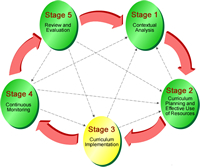 |
|
| |
| At this stage, attention is drawn to the implementation of the curriculum, e.g. whether the expected learning outcomes are achieved and have brought about positive impact on students’ growth and learning; whether there are discrepancies between the curriculum plans and their implementation, etc. Teachers may make adjustment to the plans or devise new strategies to achieve the curriculum targets. |
| |
 For Reflection and Action For Reflection and Action |
 |
What have your students learnt? What strategies, support measures or resources are used to support student learning? |
 |
Has your school made any modifications or adjustments to the curriculum plans in the process of curriculum implementation? Why? What adjustments have been made? |
 |
Have the students or teachers of your school encountered any difficulties? What are they? What are the solutions? |
|
|
| |
| 2.4.4 Stage 4: Continuous Monitoring |
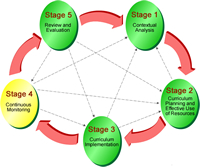 |
|
| |
| Schools continuously monitor the implementation of the curriculum so as to ensure learning effectiveness. Schools can take into consideration the methods illustrated below: |
 |
Establishing a curriculum development committee, which may include the School Heads/Deputy Heads, Primary School Curriculum Leaders, KLA/Subject Panel Heads, teachers, etc., to monitor the curriculum implementation and devise appropriate follow-up plans |
 |
Facilitating understanding of the curriculum implementation through lesson observation, observing students’ daily performance, reviewing assessment data obtained from students’ work and collecting feedback from teachers, students and parents regularly |
 |
Collecting data which can illustrate how students’ learning and health are enhanced as well as areas for improvement |
 |
Using data collection tools including lesson observation, daily observation, reviewing students’ work, students’ learning journals and assessment data, interviews, teachers’ reflections and panel meetings, etc. |
 |
Devising support measures for enhancement and improvement of student learning as appropriate, e.g. noting down the changes made to the curriculum plans and learning activities for review and follow-up |
 |
Reviewing the needs of teachers and students regularly and providing appropriate support |
|
| |
| 2.4.5 Stage 5: Review and Evaluation |
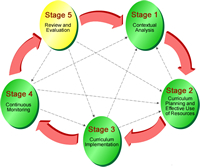 |
|
| |
| At this stage, schools review and reflect on the effectiveness of their work in support of curriculum implementation. Schools make use of the data collected, e.g. assessment data and feedback from different stakeholders, to assess students’ strengths, weaknesses and needs in order to review the level of achievement such as devising the success criteria and proposing improvement and follow-up plans as appropriate. Accurate evaluation and assessment can provide data that inform the next cycle of curriculum planning and help schools to make adjustments to the strategies between cycles so as to facilitate continuous curriculum development. |
| |
| |
| Curriculum Planning and Effective Use of Resources - Exemplars for Primary Schools |
| |
| Schools may refer to the following table and exemplars for some of the possible ways to attain different purposes in whole-school curriculum planning. |
| Purpose |
Current Situation |
Possible Way Out |
Examples |
| To create time and space for a wide range of learning activities to address individual learning needs |
 |
A fixed time allocation of 35 minutes per period, which restricts the arrangement for a range of learning experiences |
 |
Individual learning needs of students are not addressed |
 |
Schools' facilities are not fully utilised |
|
 |
To extend the length of the lessons based on learning needs such as arranging double/triple periods, or blocking a whole day/ whole week for thematic activities |
 |
To integrate independent sessions of Life Education and Moral and Civic Education or use weekly assemblies and class teacher periods to help students develop positive values and attitudes |
 |
To block a particular session for remedial measures of a particular subject, especially in reading |
 |
To allocate a counseling/ homework guidance session every day |
 |
To arrange weekly remedial teaching programmes for the academically less able students |
 |
To open the special rooms for students during lunch time and after school |
|
Refer to Exemplars 1 to 4 |
| To create space for enhancing teachers' professionalism |
 |
Insufficient time and space for teachers' professional development |
|
 |
To specify a time slot for teachers' professional development including collaborative lesson preparation or teacher development programmes in alternate weeks |
|
Refer to Exemplars 1, 3 and 4 |
|
| |
| |
| Primary School Exemplar 1 |
 |
Some longer lessons are planned. |
 |
Life education, a remedial session and a teacher development programme are incorporated into the timetable. |
 |
A class period is arranged every day. |
|
| |
| Time |
Monday |
Tuesday |
Wednesday |
Thursday |
Friday |
| 8:15-8:30 am |
Morning Assembly/Reading |
| 8:30-9:10 am |
English Language |
Putonghua |
English Language |
English Language |
English Language |
| 9:10-9:40 am |
Mathematics |
Physical Education |
Chinese Language |
Computer Studies |
| 9:40-9:45 am |
Recess |
| 9:45-10:15 am |
Chinese Language |
English Language |
Chinese Language |
Music |
Chinese Language |
| 10:15-10:45 am |
Mathematics |
Physical Education |
| 10:45-11:10 am |
Recess |
| 11:10-11:40 am |
Music |
General Studies |
Visual Arts |
Chinese Language |
Music |
| 11:40-12:10 pm |
General Studies |
General Studies |
Mathematics |
| 12:10-12:40 pm |
Chinese Language |
Mathematics |
| 12:40-1:40 pm |
Lunch |
| 1:40-2:10 pm |
Assembly/
Life
Education |
Chinese Language |
Library |
Chinese Language |
Remedial |
| 2:10-2:40 pm |
Mathematics |
Interest
Groups |
Putonghua |
| 2:40- 2:45 pm |
Break |
Break |
Teacher Development Programme |
| 2:45-3:05 |
Class
Period |
Class
Period |
Class
Period |
|
| |
| Rationale: |
 |
Double or triple lessons ensure sufficient time for the achievement of a number of learning objectives in different subjects through diversified learning activities. |
 |
Morning reading sessions are arranged to develop students’ interests and habit in reading. |
 |
The class periods allow students to do their assignments under teachers' guidance where appropriate. |
 |
Interest groups are arranged regularly to develop students' interests. The school can invite parents to participate in the activities or to conduct some interest groups for students, e.g. Chinese Club, Chess Club and Photography Club. When students join the interest groups, they can learn how to organise activities and co-operate with others. |
 |
Life education is incorporated as a core subject to facilitate whole-person development. |
 |
The fixed time slot for the teacher development programme allows teachers to share their views and understand students' needs. Collaborative lesson preparation enhances teachers' professional development. |
|
| |
| The school also schedules a week for conducting theme-based learning. An example of the programme for the Integrated Week is as follows: |
| Programme of the Integrated Week |
| Time |
Monday |
Tuesday |
Wednesday |
Thursday |
Friday |
| 8:15-8:30 am |
Morning Assembly (Publicity) |
| 8:30-9:10 am |
A Beginning
and an End (1) |
Fun with Fish |
Surfing the Musical World
(Hall) |
Fantasy Land
(1) |
Dance for a Beautiful Life
(playground) |
| 9:10-9:40 am |
Fun with Ink |
Healthy Kids
(Hall) |
| 9:40-10:15 am |
Appreciating the
Beauty of the Victoria Harbour
(outside
school) |
| 10:15-10:45 am |
| 10:45-11:10 am |
Recess |
Recess |
| 11:10-11:40 am |
Devoted to
'Bugs'
(Hall) |
A Passage to the Beauty of Life |
Joy of
Reading |
| 11:40-12:10 pm |
Recess |
A Beginning and an End (2) |
|
12:10-12:40 pm |
Fantasy Land
(2) |
Conclusion |
| 12:40-01:40 pm |
Lunch |
| 01:40-02:10 pm |
Making Your
own Musical Instrument |
Searching the Beautiful Melody |
Creating Your
Rainbow |
Fantasy Land
(3) |
Staff Development Day/
Holiday for Students |
| 02:10-02:40 pm |
| 02:40- 02:45 pm |
Class
period |
Class
period |
Class
period |
Class
period |
|
| |
 |
The objective of the Integrated Week is to provide opportunities for students to learn in an integrated way through daily activities. |
 |
Students develop their generic skills through participating in various activities under different learning environments. |
|
| |
| |
| Primary School Exemplar 2 |
 |
Schools can make flexible arrangements to the timetable, e.g. arranging longer periods on Friday to provide room for conducting learner-centred activities, connecting learning and teaching, and promoting learner engagement. |
 |
Lesson time is flexibly arranged as there is more time in a whole-day school. |
 |
The time on Friday afternoon is blocked for General Studies (GS) lessons for all levels or for conducting co-curricular activities. |
|
| |
| Time |
Monday |
Tuesday |
Wednesday |
Thursday |
Friday |
Time |
| 8:00-8:15 |
Morning Assembly / Class Teacher Period |
8:00-8:15 |
| 8:15-8:50 |
Chinese Language |
Chinese Language |
English Language |
English Language |
Assembly |
8:15-9:15 |
| 8:50-9:25 |
English Language |
Chinese Language |
Mathematics |
Chinese Language |
Mathematics |
9:15-10:05 |
| 9:25-10:00 |
English Language |
English Language |
Computer Studies |
Mathematics |
| 10:00-10:15 |
Recess |
Recess |
10:05-10:20 |
| 10:15-10:50 |
Mathematics |
Mathematics |
Chinese Language |
Physical Education |
English Language |
10:20-11:10 |
| 10:50-11:25 |
Chinese Language |
Mathematics |
Chinese Language |
Chinese Language |
| 11:25-12:00 |
Physical Education |
Music |
Music |
Chinese Language |
Chinese Language |
11:10-12:00 |
| 12:00-12:45 |
Lunch |
Lunch |
12:00-12:45 |
| 12:45-13:20 |
Library |
Putonghua |
Visual Arts |
Putonghua |
General Studies |
12:45-13:35 |
| 13:20-13:55 |
General Studies |
General Studies |
Visual Arts |
RK |
| 13:55-14:10 |
Recess |
Recess |
13:35-13:45 |
| 14:10-14:45 |
Integrated Lesson |
Activities |
13:45-14:45 |
|
| |
| Rationale: |
 |
Double periods on Friday facilitate the arrangement of a range of learning experiences. Relevant whole-school activities like seminars, visits, inter-class competitions and opportunities for life-wide learning are arranged during the block periods of General Studies. |
 |
The integrated lesson, e.g. tutorial sessions, enhancement lessons for particular subjects and training for different school teams, can cater for the diverse learning needs of students. Teachers may also make arrangements for skills-training sessions such as information technology, information search, report writing, reading, research and study, presentation, choral speaking and life skills to help students master some generic skills. |
|
| |
| |
| Primary School Exemplar 3 |
 |
The school arranges leisure and cultural activities at lunch time from Monday to Thursday. |
 |
Staff development is conducted on alternate Friday afternoons when there is no formal class teaching for the students. |
 |
A guidance session is arranged every day to cater for students who need extra help in academic work. The Intensive Remedial Teaching Programme (IRTP) is also arranged at the same time and students with special learning needs have a chance to learn with other students. It is carried out in normal lessons through co-teaching. With two teachers teaching the same class, students' needs can be better catered for and the "labelling effect" can be avoided. |
|
| |
| Time |
Monday |
Tuesday |
Wednesday |
Thursday |
Friday |
| 8:00- 8:35 am |
Class period |
| 8:35- 9:15 am |
English Language |
English Language |
English Language |
English Language |
English Language |
| 9:15- 9:55 am |
English Language |
General Studies |
Physical Education |
English Language |
Chinese Language |
| 9:55- 10:30 am |
Mathematics |
General Studies |
Mathematics |
Chinese Language |
Mathematics |
| 10:30- 11:00 am |
Recess |
| 11:00- 11:35 am |
Chinese Language |
Putonghua |
Mathematics |
Mathematics |
Mathematics |
| 11:35- 12:10 pm |
Chinese Language |
Music |
Visual Arts |
Mathematics |
General Studies |
| 12:10- 12:45 pm |
Physical Education |
Mathematics |
English Language |
Music |
General Studies |
| 12:45- 1:15 pm |
Lunch
Leisure and Cultural Activities in School |
| 1:15- 1:55 pm |
| 1:55- 2:30 pm |
Visual Arts |
Library |
Chinese Language |
Chinese Composition |
Moral Education /
Staff
Development |
| 2:30- 3:05 pm |
Visual Arts |
Chinese Language |
Chinese Language |
Chinese Composition |
Putonghua/
Staff Development |
| 3:05- 3:40 pm |
Remedial
(Eng) |
Remedial
(Chi) |
Remedial
(Chi) |
Remedial
(Eng) |
English Language/
Staff
Development |
|
| |
| Rationale |
 |
The school lays emphasis on creating a caring learning environment and enhancing students' self-esteem and self-discipline. |
 |
To develop among students a sense of belonging, the school facilities are fully utilised: |
| |
 |
Students read in the library and also use the computers for electronic games or Internet surfing. |
| |
 |
Different kinds of music and visual arts activities are conducted in the Visual Arts Room and the Music Room. Students also practise playing the musical instruments or finish their assignments. |
| |
 |
Short videos of news or cartoons related to Moral and Civic Education are played in the classrooms. |
 |
Students are allowed to use different school facilities with care to develop their self-discipline. |
 |
Time is arranged for teacher development, such as collaborative lesson preparation, sharing of experiences, conducting and attending seminars. |
 |
Activities related to Moral and Civic Education or extended leisure and cultural activities are arranged for students on alternate Fridays. |
|
| |
| |
| Primary School Exemplar 4 |
 |
The school arranges the learning time for subjects at different levels flexibly. |
 |
The school exercises flexibility in allocating learning time from Monday to Saturday. |
 |
A skill training lesson is allocated to help students to acquire generic skills such as information technology, information search, report writing, reading, research and study, presentation, choral speaking and life skills. |
 |
Interest Groups are arranged for KS2 students. |
 |
Co-curricular activities are conducted on Saturdays in long weeks. |
|
| |
| Time Allocation for Chinese Language and English Language - Primary 1 to Primary 6 |
| Key Learning Area |
Subject |
Teaching Hours in
Key Stage 1/2 |
Total Teaching Hours over
6 years |
| P1 |
P2 |
P3 |
P4 |
P5 |
P6 |
Chinese Language
Education |
Chinese Language |
169 |
169 |
169 |
146 |
146 |
146 |
1080 |
| Putonghua |
22.5 |
22.5 |
22.5 |
22.5 |
22.5 |
22.5 |
English Language
Education |
English Language |
146 |
146 |
146 |
169 |
169 |
169 |
945 |
|
| |
| Class Timetable |
| Time |
Monday |
Tuesday |
Wednesday |
Thursday |
Friday |
Saturday |
| 8:00-8:45 am |
Assembly |
English Language |
General Studies |
Mathematics |
Chinese Language |
Skills Training |
| 8:45-9:30 am |
Chinese Language |
Library |
English Language |
English Language |
English Language |
Chinese Language |
| 9:30-9:45 am |
Recess |
| 9:45-10:30 am |
Physical Education |
Chinese Language |
Music |
Chinese Language |
Visual Arts |
English Language |
| 10:30-11:15 am |
English Language |
Music |
Putonghua |
Skill
Training |
Visual Arts |
Mathematics |
| 11:15-11:25 am |
Recess |
| 11:25-12:10 pm |
General Studies |
Physical Education |
Chinese Language |
General Studies |
Mathematics |
Co-curricular Activities
11:30-12:45
or
2:00-5:00 |
| 12:10- 12:55 pm |
Chinese Language |
Mathematics |
Mathematics |
Chinese Language |
English Language |
| 1:40-1:45 pm |
Interest Groups/Intensive Remedial Teaching Programme |
| 1:45-3:30 pm |
Collaborative Lesson Preparation
(each teacher has to attend at least 3 sessions per week) |
|
| |
| Rationale: |
 |
The school allocates more time to Chinese Language in KS1 and English Language in KS2. This helps students to develop reading skills in Chinese Language at an early stage of schooling and facilitates reading to learn. The KS2 students meet the Native-speaking English Teacher one period per week. They learn to communicate in English in an authentic situation to become more competent when attending interviews and make a better transition to secondary schooling. |
 |
A 45-minute period makes learning and teaching more coherent as learner-centered activities can be conducted. Students are more attentive in the lesson. |
 |
An Intensive Remedial Teaching Programme is carried out in normal lessons every day in the form of collaborative teaching. With two teachers teaching the same class, students' needs can be better catered for and the "labelling effect" can be avoided. |
 |
The KS2 students can learn to organise activities and collaborate with others when participating in interest groups such as Chinese Club, Bridge Club and Photography Club. |
|
| |
| |
| Remarks |
| |
| 1 |
Reference for 5 Stages of whole-school curriculum planning:
http://www.education.vic.gov.au/school/teachers/support/Pages/guide.aspx |
| |
|
| 2 |
For example, tutorial classes, community service partnership programmes. |
| |
|
| 3 |
At the stage of curriculum implementation, the subject panels or colleagues in-charge need to regularly review the extent as to how the curriculum is implemented. Areas for review cover student learning, the use of strategies, the implementation of curriculum plans, the effectiveness of support measures, the difficulties and/or solutions, and the adjustments made. For details, please refer to section 2.4.3 of this Chapter. |
| |
|
| 4 |
The curriculum development committee monitors curriculum implementation and devises follow-up plans as appropriate. Evidence demonstrating enhancement of student’s learning abilities, and areas for improvement is collected. For details, please refer to section 2.4.4 of this Chapter. |
| |
|
| 5 |
At the review and evaluation stage, schools make good use of the data collected, which include the assessment data and comments of different stakeholders, to understand students’ needs, their strengths and weaknesses in learning. Schools can then have a better understanding about whether the success criteria are met and devise improvement plans as appropriate. For details, please refer to section 2.4.5 of this Chapter. |
|
| |
| |
 Reference Notes Reference Notes |
 |
Students experience the transition from childhood to early adolescence when they progress from Key Stage 1 to Key Stage 2. They experience different developmental changes in terms of intelligence, character and social skills. Therefore, schools should ensure a smooth transition across levels and Key Stages to help students build a solid foundation for their future study and facilitate healthy growth. |
 |
Schools should follow the educational principles and avoid overloading students, regardless of parents’ request for a more packed and demanding curriculum with content far beyond students’ learning ability. |
|
|
| |
| |
| References |
| The following references are by no means exhaustive and listed for reference only. |
| Publications |
Education Bureau of the Government of Hong Kong Special Administrative Region.Inspection Annual Report 2009/10 for Quality Assurance for Schools, Education Bureau of the Government of Hong Kong Special Administrative Region. Source:
|
| |
| Websites |
EDB: Guidelines on Drawing up the School Calendar
|
| |
EDB: One-stop Portal for Learning & Teaching Resources
http://www.hkedcity.net/edbosp/ |
| |
EDB: Curriculum Development
http://www.edb.gov.hk/tc/curriculum-development/index.html |
| |
Department of Education and Early Childhood Development, Victoria.
http://www.education.vic.gov.au/Pages/default.aspx |
| |









